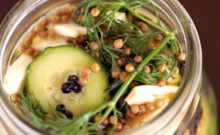If you’ve been gardening for any length of time, we strongly recommend you keep your notes in an organized fashion. It can be digital (we like to use Evernote to keep track of our gardening notes), but a physical notebook is even better in our opinion as you can quickly and easily flip and look back to your notes all in one place.
Having a notebook will allow you to keep track of what varieties worked well, what could be improved upon, how the weather might have affected the garden that season, what pests or diseases might have come up and how you dealt with them, when you re-seeded or succession planted different areas of the garden, how the harvest was, and any other relevant details you may want to record. It is a great catchall place to store and record information to make better choices with personalized notes and data when it comes to your garden in the future.
If you’re just starting or want to include more items in your notebook, here are some things we can recommend for you to take notes of.
Pre-Season:
The pre-season is when we select new varieties to grow, read through seed catalogs, plan the layout of our garden/raised beds/containers, and consider what new tools or equipment you might need for the upcoming season. You can use this like a shopping list next time you’re at your garden center, to write down varieties you’d like to grow, but don’t have space for, plan out when you need to start your own seeds to plant outdoors, update the garden layout for crop rotations, and make notes on new gardening techniques you want to try from different books or articles you may be reading over the winter months
Think of this time to plan and prepare as much as you can for the upcoming season.
Gardening Season:
During the gardening season, we have many more entries, usually with each entry dated based on what was done in the garden. During the main spring planted, we generally note what day we planted, what was planted, where it was planted, how much, and any other relevant notes such as weather conditions and soil conditions (i.e. planting delayed due to heavy rain, soil quite wet at planting time)
We’ll also take notes to include things like weather patterns (unusually hot, cold, dry, wet, humid, windy, etc), dates when we notice bugs/insects/birds appearing in the garden, any natural pest control remedies undertaken, how well different crops perform (if it was eaten by bugs, grew well, had regular harvests), when different tasks such as pruning or succession planting took place, and any other noteworthy items. These all get stored in the notebook
Post Gardening Season:
Usually in October or November, we’ll reflect on how the past season went noting things like our favourite varieties, what we’d like to improve on, what worked well, and any other unresolved questions we didn’t have time to research during the season.
[Got a Tip?] If you have a tip to share with your fellow urban farmers, let us know at tips@youngurbanfarmers.com. Want More Tips? Browse our Tips Archive for more.






